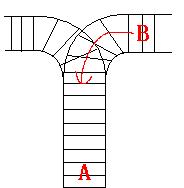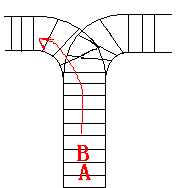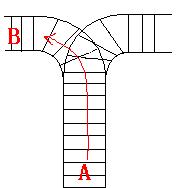


3 123 321 3 123 312
Yes. in in in out out out FINISH No. FINISHFor the first Sample Input, we let train 1 get in, then train 2 and train 3. So now train 3 is at the top of the railway, so train 3 can leave first, then train 2 and train 1. In the second Sample input, we should let train 3 leave first, so we have to let train 1 get in, then train 2 and train 3. Now we can let train 3 leave. But after that we can‘t let train 1 leave before train 2, because train 2 is at the top of the railway at the moment. So we output "No.".HintHint
#include<cstdio>
#include<cstring>
#include<stack>
#include<iostream>
using namespace std;
int main()
{
int n,j, k, flag[50]; //flag数组记录入栈出栈顺序
char s1[15], s2[15];
stack <char> s;
while(~scanf("%d %s%s",&n,s1,s2))
{
while(!s.empty()) s.pop();
memset(flag,-1,sizeof(flag));
j = k = 0;
for(int i=0;i<n;i++)
{
s.push(s1[i]);
flag[k++]=1;
while(!s.empty()&&s.top()==s2[j]) //如果栈不为空并且栈顶元素等于当前出栈的元素!
{
s.pop(); //出栈
flag[k++]=0; //标记出栈
j++; //记录出栈次数
}
}
if(j==n)
{
printf("Yes.\n");
for(int i=0;i<k;i++)
{
if(flag[i])
{
printf("in\n");
}
else
{
printf("out\n");
}
}
}
else
{
printf("No.\n");
}
printf("FINISH\n");
}
return 0;
}
HDU-1022-Train Problem I(C++ && 简单堆栈)
原文地址:http://blog.csdn.net/qq_16542775/article/details/45818235